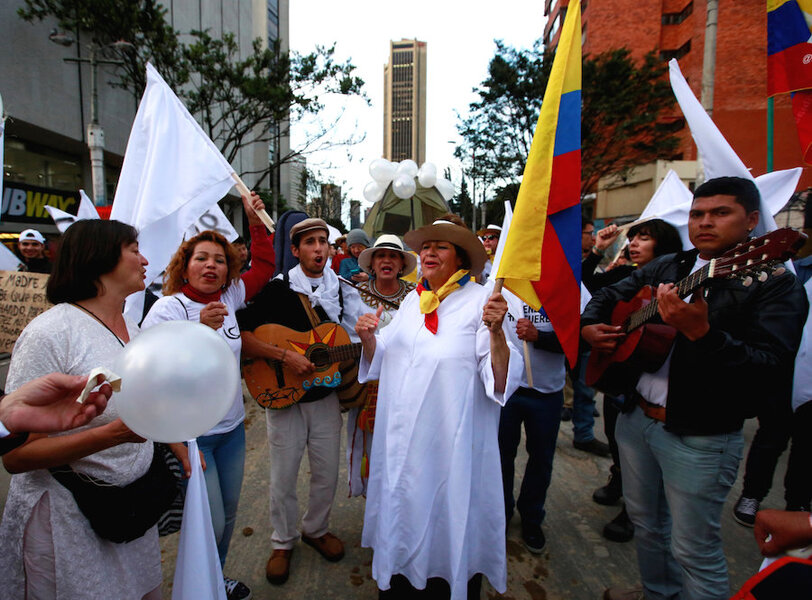Peace pact 2.0 to end Colombia’s war
Loading...
The practice of “restorative justice” has steadily spread around the world over the past quarter century, both in resolving normal crimes as well as in helping countries coming out of a conflict. In the United States, at least 35 states now promote this use of dialogue, reparations, and reconciliation between crime victims and their perpetrators. But the most visible and massive attempt to use it is in Colombia, which seeks to end a 52-year war. Getting it right has not come easy, but Colombia’s likely success could become a model for other conflict zones.
In a surprise vote last month, Colombians shot down the government’s proposed peace deal with Marxist rebels that included some leniency for the group’s 6,000 guerrillas still in jungle hide-outs. The “no” side demanded that the rebels of the Revolutionary Armed Forces of Colombia (FARC) be more active in supporting the war’s victims.
Stunned by the vote, President Juan Manuel Santos quickly negotiated a new deal with FARC. On Monday, a new agreement was announced, one that adopts many of the complaints of the original pact’s opponents. The key addition: The rebels promise to declare and hand over all their assets – mostly earned from drug trafficking and kidnapping – that will then be used for reparations to victims.
The first pact had included most of the main elements of restorative justice: truth telling about crimes, a commitment to not return to violence, and a system of justice that balances punishment with forgiveness. But the rebels were not required to assist Colombian society in becoming whole again by helping to heal the lives of their victims. Now they bear a burden to repair the country, a form of punitive justice that goes beyond jail time.
The rebels also agreed to more stringent forms of confinement for those convicted of crimes by a special tribunal. And they will still be welcomed to participate in politics and hold seats in Congress, a concession to the group’s longtime political goals. “The reason for all peace processes in the world is precisely so that guerrillas leave their arms and can participate in politics legally,” Mr. Santos said.
The new pact is expected to be approved by Congress soon. The alternative to a peace pact was more war. The rebels might have lost that war someday but instead they have now volunteered to give up their arms – and provide restitution.
At the heart of restorative justice is the concept of a perpetrator willingly admitting his or her wrongs and putting things right, not only for victims but for the well-being of the wider community.
Admitting one’s mistakes and making amends can help lessen the wounds of a war. If Colombia’s attempt at this form of justice succeeds, it may make it easier for other countries, such as Syria, to gain peace.







